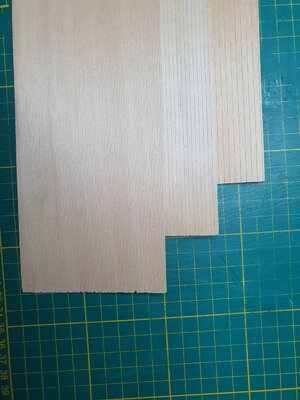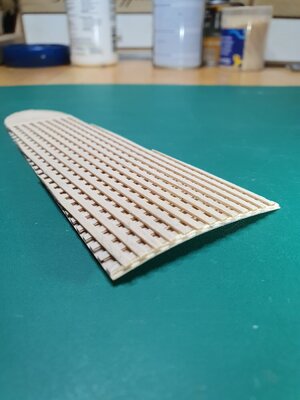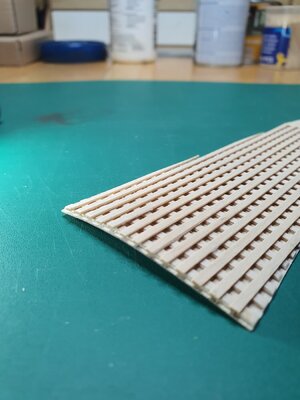Hi,
I have have built ship models in the past (Baltimore clipper, Valley Belle, both abandoned for lack of experience), but I am now building a model of a Handley Page V/1500 bomber of the first World War.
The problem I engage is the following: I am working on the cockpit floor, which was originally made of cross-wise applicated slats on a plywood base.
I tried to replicate this in 1/32, also with wood. These planks were meant for deck planking, and are 0.8 mm thick. The wood - I think- is linden. The bottom is is a single sheet of 0.9 mm birch.
I used simple PVA wood glue, but the bottom is warped because in same places I used the glue a little too liberally.
Does anyone know a way to resolve this without the slats coming of? It was tedious work and I really don't want to make a new one...
Regards,
Willem



I have have built ship models in the past (Baltimore clipper, Valley Belle, both abandoned for lack of experience), but I am now building a model of a Handley Page V/1500 bomber of the first World War.
The problem I engage is the following: I am working on the cockpit floor, which was originally made of cross-wise applicated slats on a plywood base.
I tried to replicate this in 1/32, also with wood. These planks were meant for deck planking, and are 0.8 mm thick. The wood - I think- is linden. The bottom is is a single sheet of 0.9 mm birch.
I used simple PVA wood glue, but the bottom is warped because in same places I used the glue a little too liberally.
Does anyone know a way to resolve this without the slats coming of? It was tedious work and I really don't want to make a new one...
Regards,
Willem




